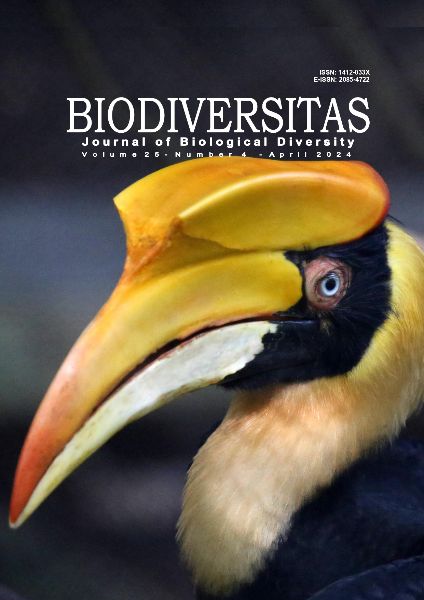Trypan blue dye decolorization by Aeromonas caviae isolated from water sewage in Jakarta, Indonesia
##plugins.themes.bootstrap3.article.main##
Abstract
Abstract. Pinontoan R, Susanto TSR, Lucy J, Angelina C, Soentoro SE, Purnomo JS, Cornelia M. 2024. Trypan blue dye decolorization by Aeromonas caviae isolated from water sewage in Jakarta, Indonesia. Biodiversitas 25: 1631-1637. The textile industry generates a substantial amount of hazardous chemical waste, which requires proper treatment to mitigate negative environmental and health consequences if left untreated. Studies on the removal of Trypan Blue (TB), a widely used commercial diazo textile dye, by indigenous bacteria are limited. Therefore, this study aimed to isolate, identify, and characterize microorganisms capable of decolorizing TB in textile dye-contaminated wastewater from Jakarta. Microorganisms were initially screened for decolorization activity in solid media containing TB. Among the isolated strains, TB2 isolate exhibited the highest decolorizing potential and was selected for further analysis. The morphological, biochemical, molecular, and phylogenetic characteristics of the TB2 isolate revealed that it belonged to the species Aeromonas caviae. To examine the ability of the isolate to remove TB, various culture conditions, such as pH, temperature, and agitation, were tested. The results demonstrated that the A. caviae TB2 strain could reduce up to 77.10% of TB (0.0025% (w/v)) under static conditions, pH 7.0, and 27°C over six days. To our knowledge, this is the first study to report the ability of the Aeromonas genus to decolorize TB. These results imply the potential use of A. caviae for decolorizing dye-bearing industrial wastewater.

